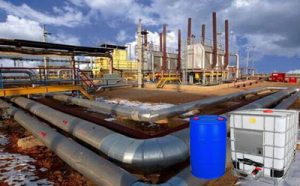Water treatment chemicals are the core products in water treatment. It plays an irreplaceable role. The earth’s water resources are seriously deprived. Related companies advocate saving water resources. Improve water resource utilization.

Water treatment agents play an important role in water conservation. At present, the importance of water treatment chemicals is not limited to this.
Water treatment chemicals are not only capable of treating water but also important chemical additives in the chemical, petrochemical, paper, textile, and other industries. Understanding the 15 terms below related to water treatment agents can help factories better choose and use them.
1. Conductance: The number of ions that can move between two poles of one square centimeter and one centimeter apart. This is called electrical conductivity. The unit is μs/cm.
2. Resistance: The reciprocal of the conductance. The unit is Ω.
3. Hardness. It refers to the content of calcium and magnesium ions in the water source. Usually expressed in a number of grains per gallon.
4. pH value. It is the relative amount of acid and base in the solution. The pH is a measure of the negative logarithm (log) of the hydrogen ion concentration in the water.
The pH value is 0~14. Water with a pH of 7.0 is neutral. Water having a pH of less than 7.0 is acidic. Water having a pH greater than 7.0 is alkaline.
5. Total solids (TS) is the sum of total dissolved solids (TDS) and total suspended solids (TSS).
6. Alkalinity is a generic term used to describe carbonate, bicarbonate and hydroxide content.
7. Total Organic Carbon (TOC). Total Organic Carbon (TOC) is a unit of measurement that is contaminated with organic matter in water in mg/l. TOC is a direct measure of the oxidizable organic matter.
8. Activated carbon. Granular activated carbon is used to remove odor, odor, chlorine, chloramine and some organic matter in water.
9. NTU. The unit of scattering turbidity. Use a beam of light to pass through the sample water. The turbidity of the turbid water was measured by a turbidity meter.
10. Penetration. The natural flow of water through the semipermeable membrane from the side of the low concentration solution to the side of the high concentration solution. This flow state will stop until the energy reaches equilibrium.
11. SDI. Sand density index. Used to measure the number of suspended solids in raw water used in reverse osmosis systems.
12. Resin. A specially manufactured polymer pellet. It is used in ion exchange systems. Its role is to remove dissolved salts in aqueous solution.
13. LSI. Langelier saturation index. According to the expression: LSI (saturation index) = pH – pHs.
The prediction of calcium carbonate precipitation using this formula is performed under specified conditions, temperature, pH, TDS, hardness, and alkalinity.
14. Endotoxin. A heat-resistant heat source. Especially fatty polysaccharides found in the cell walls of living or inanimate bacteria.
15. Ozone. An unstable, highly active form of oxygen. It is produced by natural lightning or high-voltage electric charge through the air. Ozone is an excellent oxidant and disinfectant.
The above are 15 terms for water treatment chemicals. Thank you for reading and sharing. Please look forward to the next water treatment chemicals blog.
Blog Title:
